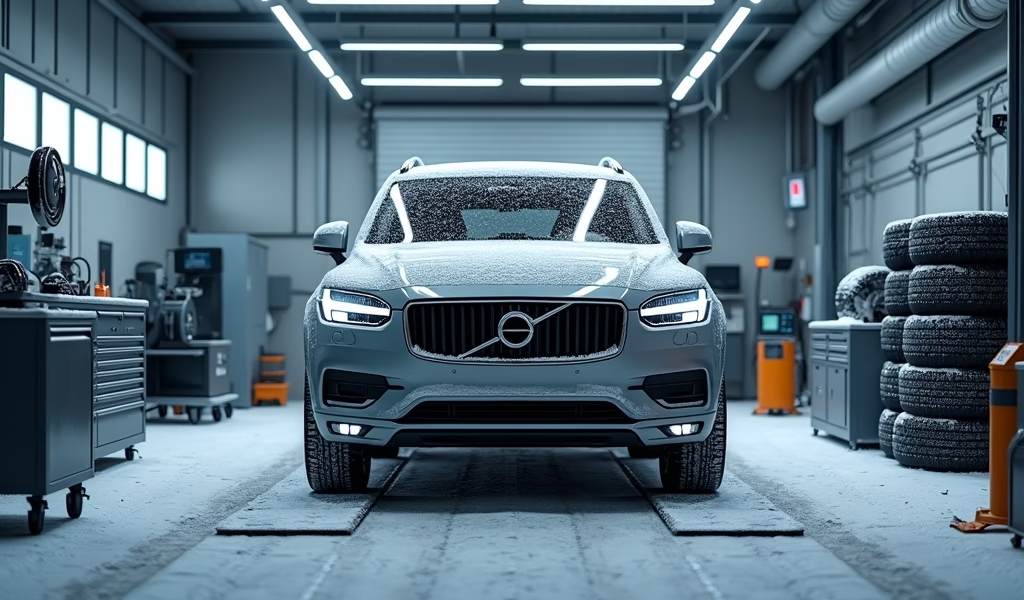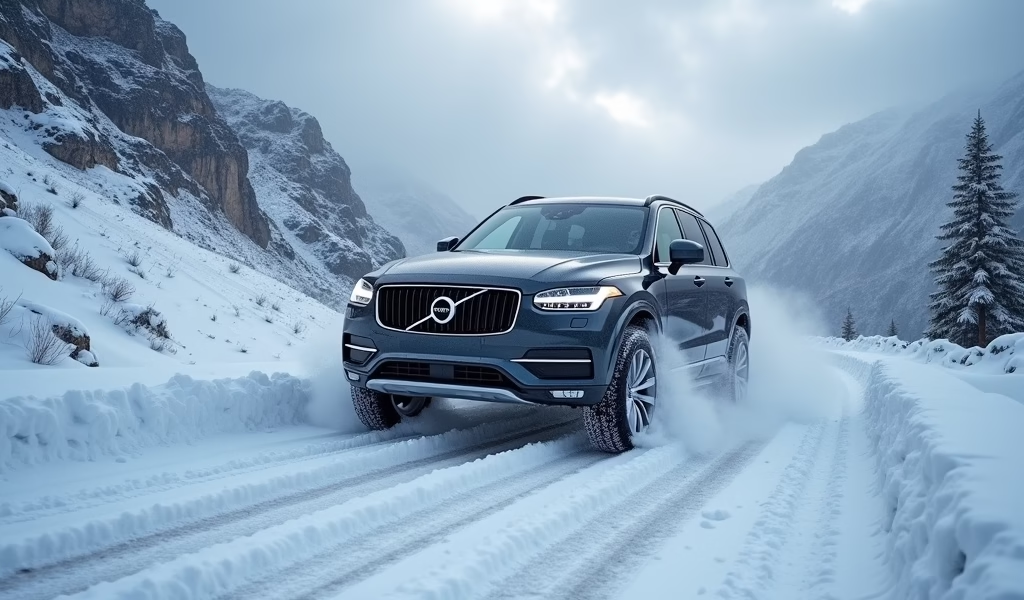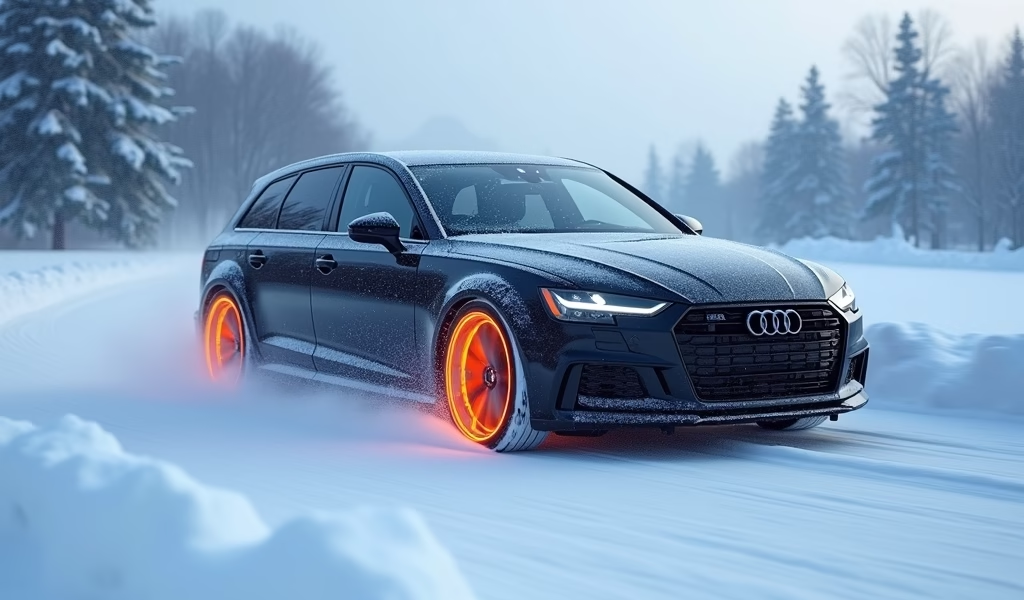Overview
This article explains seven key factors that make vehicles effective in snow conditions: AWD/4WD systems for better traction, winter tires for grip, adequate ground clearance, electronic stability systems, proper weight distribution, winterization features, and regular maintenance. The author provides specific vehicle recommendations at various price points while emphasizing that the combination of proper tires and drivetrain technology is more important than vehicle type alone.
Table of Contents
- Why the Right Car Matters for Snow
- AWD and 4WD Systems: Your Winter Allies
- Winter Tires: The Foundation of Snow Driving
- Ground Clearance: Staying Above the White Stuff
- Electronic Stability and Traction Systems
- Engine Type and Weight Distribution
- Winterization Features Worth Having
- Top Recommended Models for Snow Driving
- Winter Maintenance Tips
- Conclusion
- Frequently Asked Questions
When winter blankets the roads with snow and ice, having the right vehicle can make all the difference between a confident commute and a white-knuckle ordeal. As someone who’s spent over 20 years working on vehicles in the snow belt, I’ve seen firsthand how the best car for snow can transform winter driving from a dreaded chore into a manageable—even enjoyable—experience.
Snow-capable vehicles aren’t just convenient; they’re essential safety tools in regions where winter storms are a regular occurrence. Let’s explore the seven proven treatments that can turn an ordinary vehicle into a winter warrior, helping you navigate safely through the most challenging conditions mother nature throws your way.
Why the Right Car Matters for Snow
Picture this: It’s 7 AM, six inches of fresh powder has fallen overnight, and you’ve got to get to work. Your neighbor glides confidently down the street while you’re stuck spinning your wheels in the driveway. Been there? Many of us have.
Winter-ready vehicles aren’t just about convenience—they’re about safety and reliability when it matters most. According to the National Highway Traffic Safety Administration, nearly 17% of all vehicle crashes occur during winter weather conditions. The right vehicle significantly reduces your risk of becoming part of those statistics.
Beyond safety, there’s a financial angle to consider. Towing charges, repair costs from slide-offs, and lost wages from being unable to get to work can quickly add up. Investing in a snow-capable vehicle or upgrading your current ride with the right treatments makes dollars and sense for anyone living in snow-prone regions.
AWD and 4WD Systems: Your Winter Allies

When it comes to conquering snow, all-wheel drive (AWD) and four-wheel drive (4WD) systems stand as your first line of defense. Think of them as having four hands gripping the road instead of just two.
These systems work on a simple but powerful principle: distributing power to all four wheels improves traction. While a two-wheel drive vehicle might struggle with wheels spinning uselessly, AWD and 4WD vehicles put more rubber to work, giving you better control in slippery conditions.
How They Differ
AWD systems typically operate automatically, seamlessly shifting power between wheels without driver intervention. They’re constantly working behind the scenes, making micro-adjustments that keep you moving forward. This makes them particularly user-friendly for drivers who want capability without complexity.
4WD systems, by contrast, often provide more driver control with selectable modes for different conditions. Many include low-range gearing for extreme situations—like climbing steep, snow-covered driveways or navigating unplowed back roads. They’re the workhorse of the winter driving world.
Standout Models
In my years working with winter-ready vehicles, these manufacturers consistently impress with their snow performance:
- Subaru’s symmetrical AWD system, featured in the Outback and Forester, has achieved legendary status among snow-belt dwellers
- Audi’s Quattro system delivers exceptional grip with sophistication in everything from the A4 to the Q7
- The Jeep Grand Cherokee offers selectable 4WD modes specifically tuned for varying snow conditions
Remember: while AWD/4WD helps you accelerate and maintain control in snow, it doesn’t help you stop any faster. That’s where our next treatment comes in.
Winter Tires: The Foundation of Snow Driving
If I could recommend just one upgrade for winter driving, it would be dedicated winter tires. Even the most sophisticated AWD system can’t overcome the limitations of inadequate rubber.
The “all-season” label might be the automotive industry’s most misleading term. These tires perform adequately in light winter conditions but fall dramatically short when facing serious snow and ice. Here’s why:
- All-season compounds harden as temperatures drop below 45°F, reducing grip
- Their tread patterns aren’t designed to channel snow effectively
- They lack the micro-siping technology that creates thousands of biting edges for ice traction
Quality winter tires are specifically engineered for cold-weather performance with special rubber compounds that remain pliable even in sub-zero temperatures. Their deeper, more aggressive tread patterns bite into snow while wider grooves effectively channel slush away from the contact patch.
For optimal performance and longevity, install winter tires when temperatures consistently fall below 45°F (typically November in northern regions) and remove them when spring temperatures stabilize above that threshold. Store them in a cool, dry place away from direct sunlight, ideally in tire bags and stacked horizontally.
Many drivers I’ve worked with report that the difference between all-season and winter tires is like night and day. As Consumer Reports testing has shown, even a front-wheel-drive car with winter tires outperforms an AWD vehicle with all-seasons in braking and cornering tests.
Ground Clearance: Staying Above the White Stuff
Nothing stops a winter journey faster than getting high-centered on a snow bank—a frustrating predicament familiar to many sedan owners after substantial snowfall. Ground clearance matters, and it matters a lot.
In my experience, vehicles with around 8-9 inches of clearance provide sufficient height to navigate most snow-covered roads. For areas with frequent heavy accumulation, aim for 9+ inches if possible. This explains the rising popularity of crossovers and SUVs in snow-prone regions—it’s not just fashion; it’s practical engineering.
The advantages of higher-riding vehicles extend beyond simply avoiding snow scraping your undercarriage:
- They allow you to glide over snow rather than plow through it
- The elevated driving position improves visibility during snowfall
- Many combine height advantage with AWD for double protection
Even with ample clearance, navigating deep snow requires technique. Maintain steady momentum without excessive speed, avoid sudden steering or braking that could lead to getting stuck, and follow existing tracks when possible. If blazing your own trail, use gentle back-and-forth movements to gradually establish a path.
Electronic Stability and Traction Systems
Modern vehicles come equipped with electronic guardian angels that detect and correct slippage almost before you realize it’s happening. These systems have evolved dramatically from their crude early versions to become sophisticated snow-fighting allies.
Electronic Stability Control (ESC) uses an array of sensors to detect when a vehicle begins to skid or slide, automatically applying brakes to individual wheels to maintain directional control. It’s like having a professional driver making split-second corrections for you.
Traction Control Systems (TCS) complement ESC by monitoring wheel spin during acceleration. When slippage is detected, they reduce engine power or apply brake pressure to spinning wheels, transferring torque to wheels with better grip.
The beauty of these systems lies in their preventative nature. They can detect loss of traction in milliseconds and often intervene so subtly that drivers may not even notice their operation. They work in harmony with Anti-lock Braking Systems (ABS) to create comprehensive control in challenging conditions.
Particularly impressive systems include:
- Volvo’s stability control with specific winter calibration
- Mercedes-Benz 4MATIC with integrated stability management
- Toyota’s Vehicle Dynamics Integrated Management (VDIM) found in models like the RAV4
Engine Type and Weight Distribution

The heart of your vehicle—its engine—and how weight is distributed throughout the chassis play crucial roles in winter performance that many buyers overlook. This is where the physics of snow driving gets interesting.
Front-engine, front-wheel drive vehicles benefit from having the engine’s weight directly over the driven wheels, improving traction during acceleration. This is why many front-wheel-drive cars perform surprisingly well in snow with the right tires.
Rear-wheel drive vehicles typically struggle more in snow due to lighter front ends and power being applied to the rear, where there’s often less weight. This is why you’ll often see pickup truck owners adding sandbags to their beds for winter driving—they’re manually improving weight distribution.
In winter driving, weight can be your friend (to a point). Heavier vehicles generally provide better traction in snow, but excess weight can extend stopping distances. It’s a balancing act that manufacturers like Subaru have perfected in their affordable all-wheel-drive models.
For optimal snow performance, these configurations tend to excel:
- Front-engine AWD crossovers and SUVs
- Front-wheel drive vehicles with winter tires
- Properly weighted AWD or 4WD trucks and SUVs
Winterization Features Worth Having
Beyond the mechanical systems that keep you moving, modern vehicles offer comfort and convenience features that make winter driving not just bearable but actually pleasant. After decades in the business, I can tell you these aren’t luxuries—they’re sanity savers during the long winter months.
Heated Everything
Cold-weather comfort has evolved dramatically:
- Heated seats warm your body directly, functioning even before the cabin air heats up
- Heated steering wheels eliminate the need for bulky gloves that reduce grip
- Heated mirrors and windshield washer nozzles ensure clear visibility
- Heated windshields clear frost in minutes
Remote starters have become the winter game-changer that many drivers can’t live without. Pre-warming your vehicle improves engine performance, defrosts windows before you enter, and makes the first moments of your commute infinitely more comfortable. Many modern systems work via smartphone apps, allowing activation from the comfort of your breakfast table.
Cold weather is notoriously hard on batteries, with capacity dropping by up to 50% in freezing temperatures. Vehicles equipped with higher-capacity batteries with cold cranking amps (CCA) ratings of 600+ perform noticeably better in winter. Engine block heaters, once considered niche accessories, have become essential equipment in the coldest regions.
Top Recommended Models for Snow Driving
After assessing countless vehicles through snowy seasons, here are my standout recommendations at different price points:
Budget-Friendly Winter Warriors (Under $30,000)
- Subaru Impreza: With standard AWD, excellent visibility, and remarkable fuel efficiency, it’s a winter standout at an accessible price point.
- Mazda CX-30 AWD: Combines responsive handling with a sophisticated AWD system and good ground clearance.
- Honda CR-V AWD: Offers a reliable AWD system, excellent ground clearance, and Honda’s reputation for dependability.
Mid-Range Snow Specialists ($30,000-$50,000)
- Subaru Outback: The lifted wagon design provides excellent clearance while maintaining car-like handling.
- Toyota RAV4 Hybrid AWD: Combines excellent traction with fuel efficiency that doesn’t plummet in winter conditions.
- Ford Bronco Sport: Offers genuine off-road capability with a G.O.A.T. mode specifically for snow.
Luxury Snow Performers ($50,000+)
- Audi Q7 with Quattro: Provides sophisticated AWD technology with luxury appointments.
- Volvo XC90: Combines Scandinavian winter expertise with elegant design and industry-leading safety.
- Jeep Grand Cherokee L: Offers genuine 4WD capability with a luxury interior.
These recommendations reflect vehicles that have consistently impressed during real-world winter testing. For the latest models and features, check out our guide to the best cars for 2025, which includes winter performance ratings.
Winter Maintenance Tips
Even the most snow-capable vehicle requires proper maintenance to perform at its best when temperatures plummet. Here’s my pre-winter checklist based on years in the service bay:
- Test your battery and replace it if it’s over three years old
- Switch to a winter-grade oil that flows better in cold temperatures
- Check your cooling system and ensure it has the proper antifreeze concentration
- Inspect all lights—visibility is crucial in winter conditions
- Have your brakes inspected and serviced if needed
Keep these emergency kit essentials in your vehicle during winter months:
- Ice scraper and snow brush
- Compact shovel
- Traction aids (sand, cat litter, or purpose-made traction mats)
- Jumper cables or portable jump starter
- Blankets and extra warm clothing
- Non-perishable food and water
- Phone charger and portable power bank
Throughout the winter season, maintain your vehicle by keeping fuel levels above half-tank to prevent fuel line freezing, regularly clearing snow from all surfaces (including the roof), checking tire pressure monthly, and washing your vehicle during warm spells to remove corrosive road salt.
Conclusion
When winter transforms our roads into challenging terrain, having the right vehicle with the proper equipment becomes a necessity, not a luxury. The seven treatments we’ve explored—AWD/4WD systems, winter tires, adequate ground clearance, electronic stability controls, appropriate engine configuration, winterization features, and proper maintenance—work together to create a vehicle that can confidently face winter’s worst.
Remember that the “best” car for snow depends on your specific conditions. Someone navigating mountain passes has different needs than a driver in a flat, urban snowscape. Assess your typical winter challenges and prioritize the features that address them most directly.
Whether you’re shopping for a new snow-capable vehicle or preparing your current car for the coming winter, implementing these proven treatments will help ensure that winter’s fury becomes merely a beautiful backdrop to your confident, safe journeys. Stay warm, stay safe, and enjoy the winter wonderland from the comfort of your winter-ready vehicle.
Frequently Asked Questions
Is AWD or 4WD better for snow?
AWD is generally better for everyday winter driving with its automatic operation and seamless power distribution. 4WD excels in extreme conditions with deeper snow and offers more driver control for specialized situations.
Can I get by with all-season tires in snow?
All-season tires are adequate only for very light, occasional snow. For regions with regular snowfall or temperatures consistently below 45°F, winter tires provide significantly better traction, handling, and braking performance.
Are SUVs automatically better in snow than sedans?
Not necessarily – a front-wheel-drive sedan with winter tires often outperforms an SUV with all-season tires. SUVs do offer advantages in ground clearance and often come with AWD, but tires remain the most critical factor.
What’s the most affordable car that’s good in snow?
The Subaru Impreza stands out with standard AWD, good ground clearance, and excellent reliability at a starting price under $20,000. Pair it with winter tires for an unbeatable budget-friendly winter package.
How important is weight distribution for snow driving?
Weight distribution significantly affects traction, particularly during acceleration. Front-wheel drive vehicles benefit from having engine weight over the driven wheels, while rear-wheel drives often need added weight in the back for better traction.

